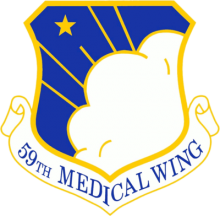HTS Open Abdomen Study
SUMMARY: 16 MAR 2018Delays in PFC contribute to increased fluid losses and nutritional demands, abdominal wall hernias, enterocutaneous fistula, and intra-abdominal infections.Hypothesis: The use of HTS after DCL may decrease the time to PFC and reduce the number of complicationsThis study will examine ten (10) flights of approximately 50 adult USAF basic military trainees (BMTs) each, 5 female and 5 male flights. We will characterize the changes in their collective cutaneous microbiome (skin colonization) via whole genomic sequencing (WGS) after exposure to universal Group A Strep antibiotic prophylaxis with penicillin as well as living in close proximity to each other for the duration of their 7 week course at Lackland AFB. Subjects will be excluded from the study for reported penicillin allergy in light of those subjects receiving prophylactic antibiotic therapy with an alternative antibiotic (typically azithromycin) which would introduce an additional variable into the study's examination of microbiome changes. Their cutaneous microbiomes will be sampled via one (1) non-invasive skin swab of their bilateral forearms and forehead at 3 time point intervals during their training as described above. We will also run in parallel study involving purely 16S ribosomal RNA characterization of the bacterial microbiome of the same ten flights (and thus same ~500 subjects) with the same 3 time points during their BMT course. We hope to further assess the impact these unique external influences have on the dermatologic microbiome of these military trainees in hopes of gaining additional insight into the temporal diversity and emergence of both pathogenic and non-pathogenic bacterial, fungal, and viral species. This study will serve as a novel and valuable baseline for the impact of systemic antibiotic administration on the skin microbiome in the setting of widespread increases in antibiotic usage rates across the globe. Objective 1 - Determine if there is a higher rate of PFC among patients who undergo DCL and temporary abdominal closure when using HTS versus standard crystalloid resuscitation.Objective 2 - Determine if faster PFC reduces ICU, ventilator and hospital days, and result in lower morbidity to include enterocutaneous fistula (ECF), intra-abdominal abscess (IAA), abdominal wall hernia, and anastomotic failure.Objective 3 - Provide insights into other research areas surrounding an open abdomen in the setting of trauma including Acute Respiratory Distress Syndrome (ARDS), abdominal hypertension, acute kidney injury, coagulopathy, surgical site infections, and immune system effects.

